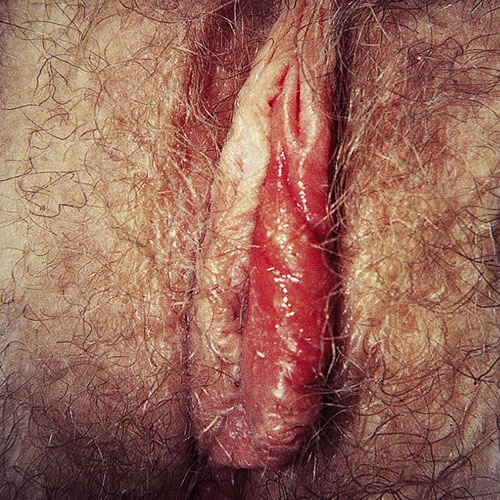Introduction
Fixed drug eruption1 is a cell-mediated allergic drug reaction causing formation, initially, of a single lesion and, occasionally, multiple lesions. It recurs in the same site on re-exposure. This is an uncommon condition on the vulva.
Epidemiology
Unknown.
Etiology
Barbiturates, acetaminophen, allopurinol, furosemide, metronidazole, penicillins, oral contraceptives, phenolphthalein, phenytoin, sulfonamide, tetracycline, and nonsteroidal anti-inflammatories are the most common offending drugs.
Symptoms and clinical features
The main complaint is burning in the area of involvement, but some cases are asymptomatic or just mildly itchy. The symptoms recur every time the offending chemical is ingested.
Initially there is a well-circumscribed, erythematous circular or oval plaque with abrupt onset. It may swell, blister, or become eroded.

It fades over 7 to 10 days after discontinuation of the precipitant, often leaving hyperpigmentation. Recurrence will be in the same place, but there may be new lesions, as well. If this occurs in mucosal tissue, the shape of the lesion may be less rounded.
Diagnosis
Based on the clinical appearance and history, diagnosis may be confirmed by challenge with the offending chemical.
Pathology/Laboratory Findings
Biopsy may be helpful.
Differential diagnosis
Differential diagnosis includes recurrent herpes simplex, lichen planus, and bullous pemphigoid.
Treatment/management
Identifying the offending chemical and stopping its use is the basis of treatment. Bland, symptomatic topical care is usually all that is needed.